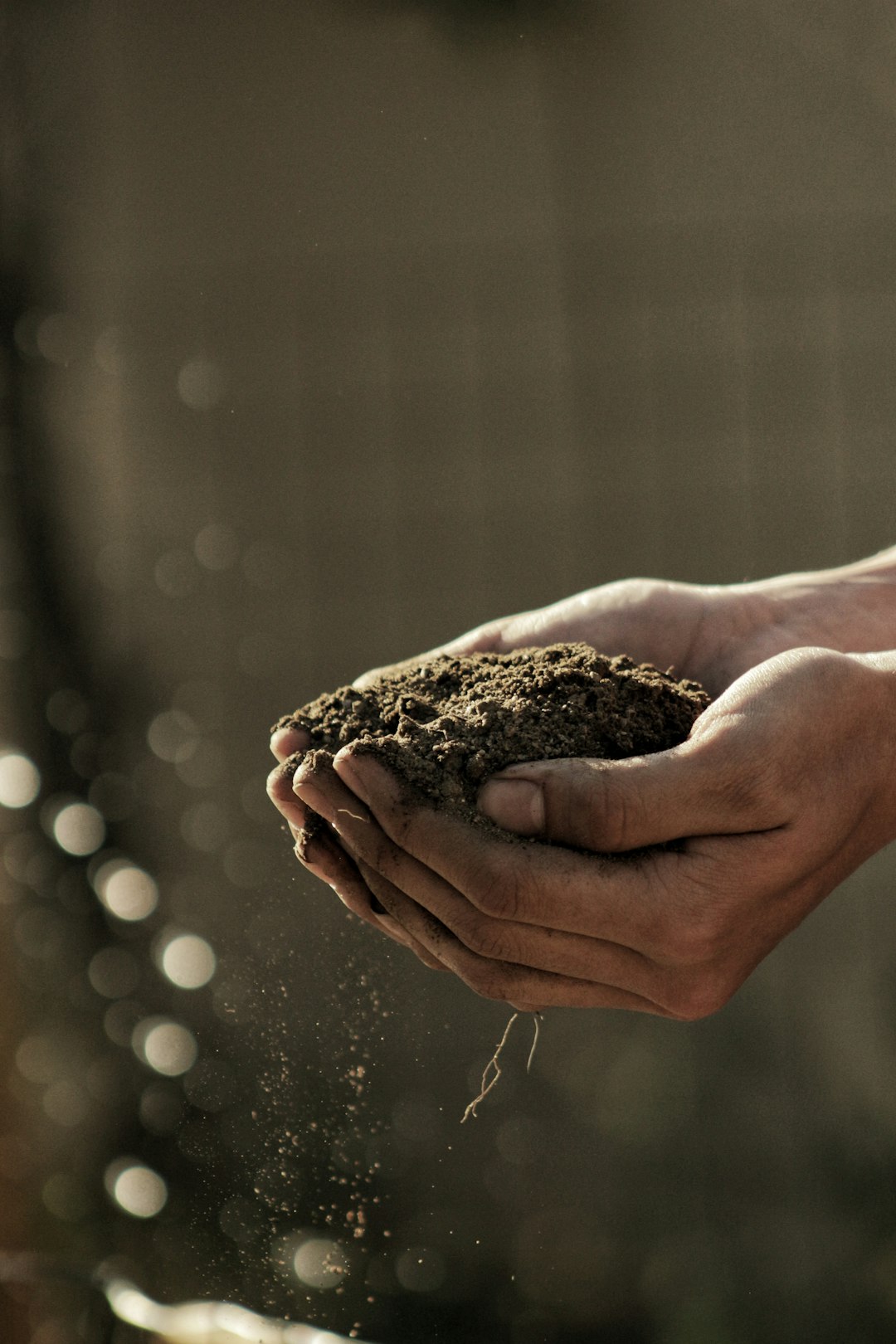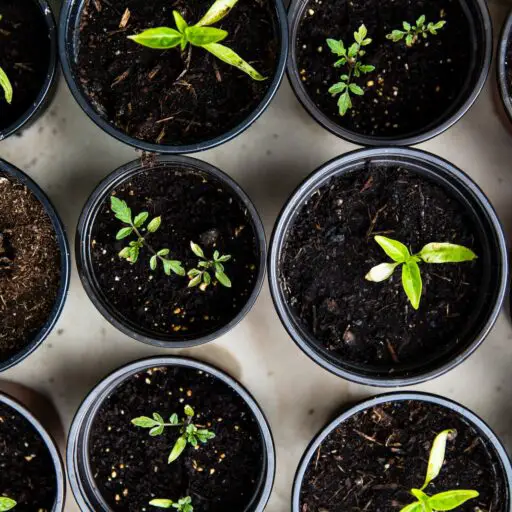Support our educational content for free when you purchase through links on our site. Learn more
Imagine a vibrant patch of green nestled within your schoolyard, where students not only learn about science and nutrition but also cultivate teamwork and responsibility. Starting a community garden at school is more than just digging in the dirt; it’s about planting seeds of knowledge, fostering a love for nature, and building a stronger community. Did you know that schools with gardens can boost student engagement and improve academic performance? In fact, research shows that students involved in gardening activities score higher in science and math! 🌼
In this comprehensive guide, we’ll walk you through 9 essential steps to create a thriving community garden at your school. From gathering support to selecting the right plants, we’ll cover everything you need to know to cultivate a successful garden that benefits students and the community alike. Ready to dig in? Let’s get started!
Key Takeaways
- Engage the Community: Build a team of teachers, parents, and students to support your garden project.
- Choose the Right Location: Ensure your garden has adequate sunlight, water access, and good soil.
- Plan Your Garden Layout: Design a functional and accessible space that encourages participation.
- Select Suitable Plants: Opt for easy-to-grow vegetables, herbs, and flowers that students will enjoy.
- Create a Sustainable Plan: Implement eco-friendly practices like composting and organic gardening.
- Integrate into Curriculum: Use the garden as a hands-on learning tool across various subjects.
- Celebrate Success: Host events to share the harvest and engage the community.
Ready to equip your school garden with the best tools? 👉 Shop gardening supplies like raised beds and tools on Amazon or Walmart to get started! 🌿
Table of Contents
Quick Tips and Facts
The Roots of Community Gardening in Schools
Why Start a Community Garden at School?
Step-by-Step Guide to Starting a School Garden
- Gathering Support and Building a Team
- Choosing the Right Location
- Designing Your Garden Layout
- Selecting the Right Plants for Your School Garden
- Creating a Sustainable Gardening Plan
- Obtaining Necessary Permissions and Resources
- Engaging Students and the Community
- Maintaining the Garden Throughout the Year
- Harvesting and Celebrating Your Success
Integrating the Garden into the Curriculum
Fun Activities and Projects for Students
Challenges You Might Face and How to Overcome Them
The Benefits of Community Gardens for Schools
Inspiring Success Stories from School Gardens
Future Trends in School Gardening
Conclusion
Recommended Links
FAQ
Reference Links
Quick Tips and Facts 🌱
- Start small, dream big! You don’t need acres of land to make a difference. A few raised beds or even container gardening can spark a love for nature. What Makes a Community Garden Successful? 7 Essential Factors 🌱
- Get the whole school buzzing! Involve students, teachers, parents, and even the local community. The more the merrier!
- Think beyond tomatoes (but include tomatoes, they’re delicious!). Herbs, flowers, and even native plants can create a thriving ecosystem and learning opportunities.
- Don’t be afraid to get your hands dirty! Gardening is a hands-on activity. Embrace the mess, the worms, and the joy of watching things grow.
The Roots of Community Gardening in Schools 🌳
Community gardening itself has deep roots, dating back centuries. But the integration of gardens into schoolyards is a more recent phenomenon. The resurgence of the school garden movement in the late 20th century was fueled by a growing awareness of the need for:
- Experiential learning: Taking education beyond textbooks and into the real world.
- Environmental stewardship: Teaching children about sustainability and their connection to nature.
- Health and wellness: Combating childhood obesity and promoting healthy eating habits.
Why Start a Community Garden at School? 🤔
Beyond the historical context, let’s dig into the why. Why are school gardens sprouting up everywhere?
- Living classrooms: Gardens transform abstract concepts into tangible lessons. Imagine learning about fractions while dividing up a pizza garden or studying life cycles by observing butterflies. 🦋
- Community builders: Gardens bring people together. Students, teachers, parents, and community members can connect, collaborate, and learn from each other.
- Nutrition powerhouses: Fresh, homegrown produce? Yes, please! School gardens can introduce students to new foods and encourage healthy eating habits. 🥕
- Green thumbs for a brighter future: Gardens cultivate environmental stewards. Children learn about sustainability, biodiversity, and the importance of protecting our planet. 🌎
Step-by-Step Guide to Starting a School Garden 🗺️
Ready to get your hands dirty? Here’s a roadmap to guide you:
1. Gathering Support and Building a Team 🤝
- Rally the troops! Talk to teachers, students, parents, and administrators about the idea. Generate excitement and gauge interest.
- Form a garden committee: This dedicated group will be the driving force behind the project.
- Identify champions: Seek out passionate individuals within the school and community who can lend their expertise and enthusiasm.
2. Choosing the Right Location ☀️
- Sun seekers: Most edible plants need at least 6 hours of direct sunlight daily.
- Water access: Ensure a convenient water source is nearby.
- Soil savvy: Get your soil tested to determine its composition and any amendments needed.
- Size matters: Start small and scale up as needed. Even a few raised beds can make a big impact.
3. Designing Your Garden Layout 📐
- Accessibility: Consider raised beds or vertical gardens for easier access.
- Functionality: Include pathways, seating areas, and storage space.
- Aesthetics: Make it visually appealing with trellises, colorful plants, and decorative elements.
- Sensory delights: Incorporate plants with different textures, scents, and colors to engage all the senses.
4. Selecting the Right Plants for Your School Garden 🌻
- Climate control: Choose plants that thrive in your region’s climate.
- Low-maintenance marvels: Opt for varieties that are relatively easy to grow and care for.
- Edible delights: Focus on fruits, vegetables, and herbs that students will enjoy eating.
- Pollinator power: Include flowers that attract bees, butterflies, and other beneficial insects.
5. Creating a Sustainable Gardening Plan ♻️
- Water wisely: Implement water-saving techniques like drip irrigation or rain barrels.
- Compost champions: Start a composting system to recycle food scraps and yard waste.
- Organic approach: Avoid synthetic pesticides and fertilizers.
- Seed saving: Learn how to save seeds from your harvest for next year’s garden.
6. Obtaining Necessary Permissions and Resources 📑
- School board approval: Present your plan to the school board and obtain any necessary permits.
- Funding sources: Explore grants, donations, and fundraising opportunities.
- Community partnerships: Reach out to local businesses, organizations, and master gardeners for support.
7. Engaging Students and the Community 🎉
- Hands-on learning: Involve students in all aspects of gardening, from planting to harvesting.
- Garden clubs: Create after-school clubs or volunteer opportunities for students to participate.
- Community workdays: Host regular workdays to bring families and community members together.
- Celebratory harvests: Organize potlucks or farmers markets to share the bounty of the garden.
8. Maintaining the Garden Throughout the Year 🗓️
- Watering schedule: Establish a regular watering routine, especially during dry spells.
- Weed warriors: Stay on top of weeding to prevent competition for nutrients and sunlight.
- Pest patrol: Monitor for pests and diseases and use organic methods for control.
- Seasonal tasks: Prepare the garden for different seasons with mulching, pruning, and planting.
9. Harvesting and Celebrating Your Success! 🍎
- Harvest time: Involve students in harvesting the fruits (and vegetables!) of their labor.
- Taste the rainbow: Organize taste tests, cooking demonstrations, and healthy recipe sharing.
- Garden-themed events: Host potlucks, farmers markets, or plant sales to celebrate your accomplishments.
- Share your story: Spread the word about your school garden’s success to inspire others.
Integrating the Garden into the Curriculum 📚
A school garden is a treasure trove of learning opportunities across various subjects:
- Science: Explore plant life cycles, ecosystems, composting, and the science of growing food.
- Math: Measure plant growth, calculate garden area, and track harvest yields.
- Language Arts: Write poems, stories, and journal entries inspired by the garden.
- Social Studies: Learn about different cultures and their agricultural practices.
- Art: Create nature-inspired artwork, build birdhouses, and design garden signs.
Fun Activities and Projects for Students 🎨
- Build a bug hotel: Provide a habitat for beneficial insects.
- Create a worm composting bin: Learn about decomposition and create nutrient-rich compost.
- Design and paint garden signs: Add a personal touch to the garden.
- Host a seed starting party: Start seeds indoors before the growing season begins.
- Organize a garden scavenger hunt: Engage students in exploring the garden’s biodiversity.
Challenges You Might Face and How to Overcome Them 💪
- Funding: Seek grants, donations, and community partnerships to secure financial resources.
- Maintenance: Establish a regular schedule and recruit volunteers to share the workload.
- Time constraints: Integrate gardening into existing curriculum or create after-school programs.
- Pests and diseases: Practice preventative measures and use organic pest control methods.
- Lack of space: Consider raised beds, vertical gardens, or container gardening.
The Benefits of Community Gardens for Schools 🌻
The impact of school gardens extends far beyond the garden gates:
- Academic achievement: Studies show that school gardens can improve test scores and academic engagement.
- Health and well-being: Gardens promote physical activity, healthy eating habits, and a connection to nature.
- Social and emotional learning: Students develop teamwork, communication, and problem-solving skills.
- Environmental stewardship: Gardens foster a sense of responsibility for the planet and inspire sustainable practices.
- Community building: Gardens bring together students, teachers, families, and community members.
Inspiring Success Stories from School Gardens ✨
Countless schools across the globe have witnessed the transformative power of community gardens:
- The Edible Schoolyard Project: Founded by chef Alice Waters, this program has created hundreds of school gardens that integrate food education into the curriculum.
- CitySprouts: This Boston-based organization helps schools build and sustain gardens that connect children to healthy food and the natural world.
- Green Schoolyards America: This national organization advocates for transforming school grounds into vibrant green spaces that benefit students and the environment.
Future Trends in School Gardening 🚀
The future of school gardening is blooming with innovation and exciting possibilities:
- Technology integration: Sensors, apps, and online platforms are enhancing garden education and data collection.
- Hydroponics and aquaponics: These innovative growing methods allow schools to garden year-round, even in limited spaces.
- Focus on equity and access: Efforts are underway to ensure that all students, regardless of background or location, have access to the benefits of school gardens.
- Climate change education: School gardens are becoming living laboratories for teaching students about climate change and its impacts.
Conclusion 🌟

Starting a community garden at school is not just about digging in the dirt; it’s about cultivating a vibrant learning environment that fosters growth—both in plants and in students! By engaging the entire school community, you can create a space that promotes healthy eating, environmental stewardship, and teamwork.
Positives of starting a school garden include enhanced academic performance, improved health and nutrition, and stronger community ties. However, challenges such as funding, maintenance, and time constraints can arise. But with careful planning and community involvement, these hurdles can be overcome!
So, are you ready to roll up your sleeves and dig into this rewarding adventure? We believe you can make it happen! 🌱
Recommended Links 🛒
-
Books on School Gardening:
-
👉 Shop Gardening Supplies:
- Raised Garden Beds: Amazon | Walmart | Gardener’s Supply Company
- Gardening Tools: Amazon | Home Depot | Lowe’s
FAQ ❓

What are the first steps to starting a community garden at school?
Engage Stakeholders
Start by gathering support from teachers, parents, and students. Form a garden committee to lead the initiative.
Assess the Site
Evaluate potential locations for sunlight, water access, and safety. Conduct soil tests to ensure it’s suitable for planting.
Create a Plan
Outline your garden’s goals, design, and maintenance plan. Consider what educational objectives you want to achieve.
Read more about “🌱 10 Steps to Build a Thriving School Garden: From Seed to Success!”
How can we involve students and parents in a school garden project?
Organize Workshops
Host workshops where students and parents can learn about gardening techniques and participate in hands-on activities.
Create Volunteer Opportunities
Encourage parents to volunteer for garden maintenance, events, and educational sessions. This builds ownership and community spirit.
Incorporate into Curriculum
Integrate garden activities into classroom lessons, making it a part of the students’ learning experience.
What plants are best suited for a school community garden?
Easy-to-Grow Varieties
Consider planting lettuce, radishes, carrots, and herbs like basil and parsley, as they are relatively low-maintenance and quick to harvest.
Pollinator-Friendly Plants
Include flowers such as sunflowers and zinnias to attract beneficial insects and enhance biodiversity.
Seasonal Selection
Plan for a mix of cool-season and warm-season crops to ensure year-round gardening opportunities.
Read more about “What Makes a Community Garden Successful? 7 Essential Factors 🌱”
What resources are available for funding a school community garden?
Grants and Donations
Look for grants from organizations like KidsGardening, Whole Kids Foundation, or local community foundations.
Crowdfunding
Platforms like GoFundMe or Indiegogo can help raise funds from the community.
Local Sponsorships
Reach out to local businesses for sponsorships or donations of materials and supplies.
Read more about “Are Community Gardens Free? 🌱 Discover 7 Surprising Insights!”
How do we maintain a community garden throughout the school year?
Establish a Schedule
Create a maintenance calendar that outlines tasks such as watering, weeding, and harvesting.
Involve Students Regularly
Incorporate garden maintenance into the school routine, allowing students to take turns caring for the garden.
Seasonal Preparation
Prepare the garden for winter by mulching and protecting plants, and plan for spring planting as the weather warms.
Read more about “Benefits of Gardening for the Environment … 🌱”
Reference Links 🔗
- USDA: Start a School Garden
- KidsGardening: Create & Sustain a Program
- Eartheasy: How to Start a School Garden
- Community Gardening Benefits
- Community Garden Events
- Community Garden Policies
- Garden Design Ideas
- Garden Maintenance Tips
With these resources and insights, you’re well-equipped to embark on your community gardening journey at school. Happy gardening! 🌼


